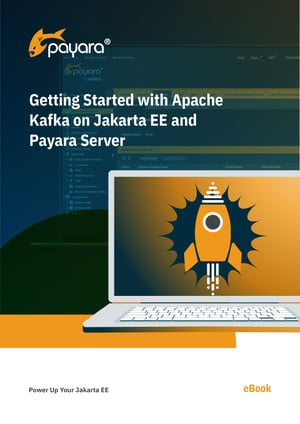Getting Started with Apache Kafka on Jakarta EE and Payara Server
Published on 18 Apr 2024
_WEB_MaxQuality_chiara.png?width=200&name=PAYARA%20(1434)_WEB_MaxQuality_chiara.png) by Chiara Civardi
by Chiara Civardi
When dealing with complex distributed systems, decoupled, asynchronous communications may be more suited to support the exchange of information between different parts of a system, or even completely different systems. In effect, this decoupling makes it possible for different parts of a system to interact without being directly connected, enhancing scalability and fault tolerance. It is possible to set up such communications through a messaging platform like Apache Kafka and design highly scalable applications.
Our new eBook - available to download here - discusses how to use Apache Kafka for Jakarta EE Platforms that use Payara Server.
Why Apache Kafka? 
Apache Kafka is an open-source, distributed message streaming platform designed to handle large
volumes of data flowing in real-time. It is one of the most common solutions currently in use, as it offers multiple benefits, including:
- Publish-Subscribe Messaging: The pub-sub system that Kafka uses fosters loose coupling between
applications. Multiple producers can feed into topics and multiple consumers can independently read from them. - High Throughput & Scalability: By dividing topics into partitions, Kafka allows for horizontal scaling, enabling efficient handling of large volumes of data and high throughput.
- High Availability & Fault Tolerance: Kafka's distributed architecture and persistent storage ensure that data, the system and processing capabilities remain available even if individual nodes or servers fail.
- Performance: Kafka's streamlined architecture and efficient design deliver excellent performance, making the solution ideal for big data and real-time applications.
- Ecosystem: Kafka's wide adoption has created a rich ecosystem of tools, connectors and
libraries for its seamless integration into various systems.
By reading our latest eBook, you will be able to get a comprehensive overview of messaging fundamentals and the Apache Kafka platform for developers to build scalable, fault-tolerant applications with ease. In addition, the document outlines the steps to set up Payara Server with the Payara Kafka Cloud Connector, enabling seamless integration for Jakarta EE applications. With Kafka's rich feature set and Payara's support for seamless integration, developers can unlock new possibilities for building robust, real-time applications.

Related Posts
Boost Developer Productivity with Payara Server Maven Plugin + AI Agent
Published on 12 Sep 2025
by Gaurav Gupta
0 Comments
Managing Payara Server Just Got Smarter
Imagine managing your Jakarta EE applications not just with Maven goals, but by asking natural questions.
With the experimental AI Agent built into the Payara Server Community's Maven Plugin, you can ...
Securing Jakarta EE Application Servers Needs Executive Attention
Published on 10 Sep 2025
by Asif Khan
0 Comments


%20Application%20Servers-An%20Executive%20Guide%20Cover.jpg?width=500&name=Securing%20Jakarta%20EE%20(Java%20EE)%20Application%20Servers-An%20Executive%20Guide%20Cover.jpg)